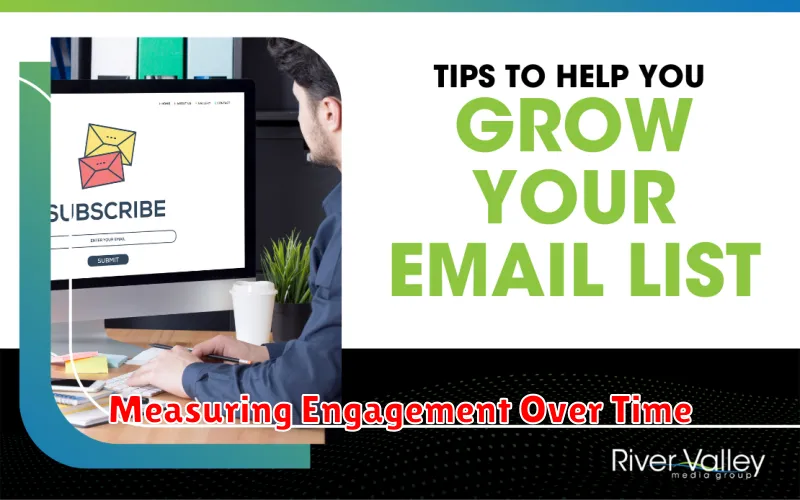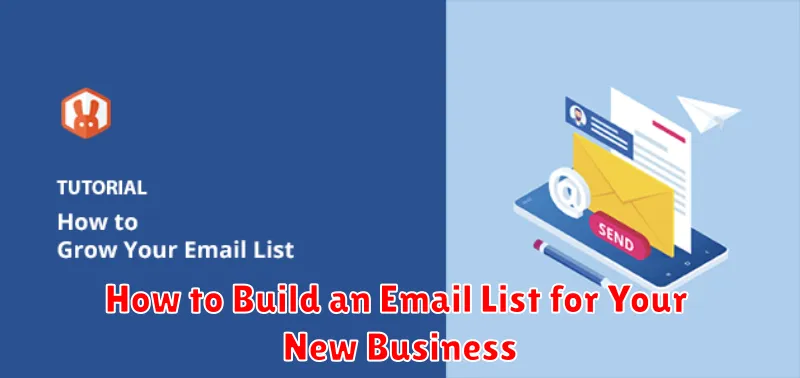Building an email list is one of the most crucial steps for any new business. A robust email list provides a direct line of communication to your target audience, fostering customer loyalty and driving sales growth. It’s a powerful marketing tool that allows you to share valuable content, promote products or services, and build stronger relationships with potential and existing customers. This guide will provide you with actionable strategies on how to build an email list for your new business, focusing on effective methods for attracting subscribers and maximizing engagement. Learn how to leverage your email list for sustainable business growth and establish a competitive edge in your market.
Whether you’re just starting out or looking to expand your current reach, understanding the importance of email marketing is paramount. This article will cover various techniques for building an email list, from offering lead magnets and utilizing social media promotion to implementing effective signup forms on your website. We’ll explore the benefits of different list-building strategies, emphasizing the creation of high-quality content that attracts the right subscribers. Start building your email list today and unlock the potential for long-term success in your new business venture.
Why Email Lists Are Still Valuable
In today’s digital landscape, email marketing remains a powerful tool for businesses. While social media platforms offer reach, email lists provide direct access to your audience, free from algorithmic interference.
Email allows for personalized communication, fostering stronger customer relationships. You can tailor messages based on individual preferences and behaviors, leading to higher engagement and conversion rates.
Building an email list is an investment in owned media. Unlike rented platforms, you have complete control over your list, ensuring a consistent and reliable channel for connecting with your audience.
Creating an Irresistible Lead Magnet
A compelling lead magnet is crucial for attracting potential customers to your email list. It’s a valuable piece of content offered for free in exchange for an email address. Think of it as a worthwhile trade – they get something useful, and you gain a potential customer.
Effective lead magnets come in various formats. Examples include ebooks, checklists, templates, webinars, and exclusive discounts. The key is to choose a format that aligns with your business and target audience’s needs.
Focus on solving a specific problem for your audience. A lead magnet shouldn’t be a sales pitch, but rather a helpful resource that establishes you as an authority and builds trust. This will make them more receptive to future communication and offers.
Choosing the Right Email Marketing Platform
Selecting the right email marketing platform is crucial for your new business. Consider these factors when making your decision:
Key Features
Ease of use is paramount, especially when starting out. Look for intuitive drag-and-drop editors and straightforward campaign setup. Automation capabilities are essential for streamlining your marketing efforts. Think welcome emails, abandoned cart reminders, and segmented campaigns. Reporting and analytics are vital for tracking your progress and understanding what resonates with your audience.
Pricing
Evaluate pricing structures carefully. Some platforms offer tiered plans based on subscriber count or email volume. Consider your budget and projected growth when selecting a plan.
Placing Opt-In Forms on Your Website
Strategic placement of your opt-in forms is crucial for list growth. Consider high-traffic areas and user experience.
Key locations include:
- Above the fold on your homepage.
- Within your website’s sidebar or footer.
- At the end of blog posts or articles.
- Dedicated landing pages.
- As a pop-up, but use these judiciously to avoid disrupting user experience.
Experiment with different locations and forms to find what converts best for your audience.
Using Popups Without Annoying Users
Popups can be a powerful tool for list building, but they can also be intrusive if not implemented carefully. The key is to find a balance between maximizing visibility and respecting the user experience.
Timing is crucial. Avoid displaying a popup the moment a visitor lands on your site. Allow them a few seconds to orient themselves first. Consider triggering the popup based on user behavior, such as scrolling down a certain percentage of the page or spending a specific amount of time on site.
Target your popups effectively. Don’t show the same popup to every visitor. Tailor the offer to different pages or segments of your audience to increase relevance and conversions.
Keep it concise and clear. A cluttered popup is a quick way to lose a potential subscriber. Clearly communicate the value proposition and make the signup process as simple as possible. Offer a compelling incentive, such as a discount, free shipping, or exclusive content, to encourage sign-ups.
Promoting Through Social Channels
Leveraging social media is crucial for building your email list. Create engaging content that resonates with your target audience and subtly encourages email signup.
Run targeted ads on platforms like Facebook, Instagram, and Twitter, specifically designed to capture email addresses. Offer a compelling lead magnet, such as a free ebook, discount code, or exclusive content, in exchange for signing up.
Use the call to action feature in your social media bios to direct traffic to your signup form. Regularly remind your followers about the value of joining your email list.
Hosting Free Webinars or Giveaways

Offering valuable content or products for free is a powerful incentive for people to join your email list. Hosting a free webinar related to your business niche provides immense value and positions you as an expert. This attracts a highly engaged audience interested in what you have to offer.
Similarly, giveaways can generate significant interest. Offer a desirable prize directly related to your business. This attracts the right target audience and encourages sign-ups. Ensure the entry requirement is providing an email address. Clearly communicate the value proposition of joining your list, emphasizing benefits such as exclusive content, early access to sales, or ongoing valuable information related to the giveaway prize.
Segmenting Your Audience
Segmentation is crucial for effective email marketing. By dividing your audience into smaller groups with shared characteristics, you can tailor your messaging for better engagement and conversions. A generic email blast rarely resonates with everyone.
Consider segmenting by demographics (age, location), behavior (purchase history, website activity), or interests (products viewed, content downloaded). This allows you to send targeted emails that address specific needs and preferences.
For example, new subscribers might receive a welcome series, while loyal customers get exclusive offers. Segmented emails feel more personal and less like mass marketing, fostering stronger customer relationships.
Setting Up Welcome Automations
Welcome automations are crucial for nurturing new subscribers. They are triggered when someone joins your email list, providing a first impression and setting expectations for future communication.
A key component of any welcome automation is the welcome email. This email should thank the subscriber for joining, briefly introduce your business, and perhaps offer a lead magnet or special discount as an incentive.
Consider a series of automated emails, delivered over several days or weeks, to further engage new subscribers. These could highlight popular content, showcase customer testimonials, or offer exclusive deals. This consistent communication helps build a relationship with your audience.
Measuring Engagement Over Time

Tracking engagement metrics over time is crucial for understanding the effectiveness of your email marketing strategy. This involves monitoring key indicators such as open rates, click-through rates (CTR), and conversion rates. Consistency is key here. Regularly analyze these metrics to identify trends and patterns.
For instance, a declining open rate could indicate issues with your subject lines, while a low CTR might suggest problems with your email content or call to action. By consistently monitoring these metrics, you can make data-driven adjustments to optimize your email campaigns for better performance.

